
Fire Emblem Engage Switch Review
As a series that last sold over three million copies with Fire Emblem Three Houses, I was surprised at Nintendo’s sneaky announcement in their September 2022 Nintendo Direct that a new Fire Emblem was coming, and it would be released within the span of just over four months. It is not often you see that happen with the big publishers, and with Fire Emblem’s increased popularity I would have expected more of a build-up for the title. For whatever Nintendo’s marketing reason, Fire Emblem Engage is here, with the title referencing its new gameplay element, the Emblem Rings (not to be confused with Elden Ring, although a Fire Emblem game set in that style would be mighty fun), which gives the game a celebratory sense about the series’ long history as it calls upon some of the game’s classic protagonist that started appearing since Fire Embelm‘s creation in 1990. More so its approach to gameplay as well, as it loses some of the elements from recent entries, such as multiple branching story arcs.
Here we have a focus on a single story set on the continent of Elyos where the main character, Alear, which can either be male or female, a staple the series has been going with for a few iterations now, wakes up after sleeping for 1,000 years. Alear was hurt during a battle with the Fell Dragon, Sombron, who was defeated by Alear’s mum, the Divine Dragon, Lumera, but not before her daughter was badly wounded. Waking up from her deep sleep, Alear has forgotten most of her memories but does remember how to use the power of the Emblem Rings, special rings that contain the spirits of past Fire Emblem heroes that can be called upon to use their powers in battle.
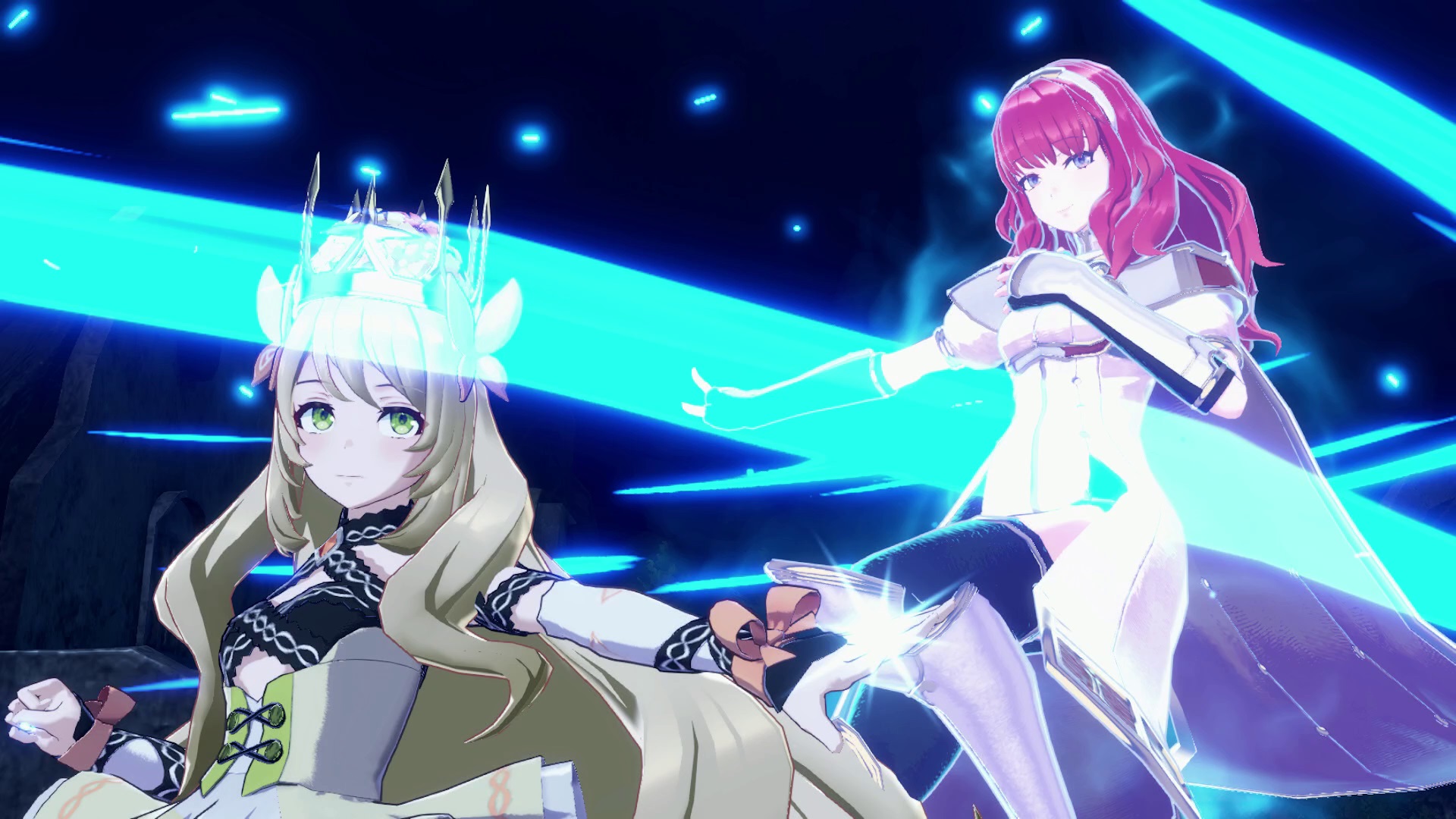
It is not long before things go south and signs that the Fell Dragon has returned, with creatures known as the Corrupted beginning to appear and attack villages around Elyos. Soon, the house of the Divine Dragon is attacked by soldiers of the Kingdom of Elusia, who have come to attempt to steal the Emblem Ring, aiming to get all 12 to fully power up the Fell Dragon. Elusia fails to grab the ring, but not before Lumera sacrifices herself to protect her daughter from harm. Taking over as the Divine Dragon, Alear swears to do all she can to collect the 12 Emblem Rings and put a stop to the rebirth of the malevolent Sombron and his rising army of death.
It is a familiar hero story, but it is the journey through the game’s 26 main story chapters that make this an entertaining adventure. The story does throw in some surprises to try and get away from the stereotypical war story, but anyone who has played multiple Fire Emblem titles will probably know what to expect from the game’s story. No choices are made here, this is truly a straightforward plot with a few side missions and skirmishes thrown in to step away from the bulk of the main storyline.

What makes the adventure fun is the characters that are met throughout the game, making new allies to take on the great evil. There is a big cast here that all shine with their personality, both on the good and evil side, pushed closer to the eccentric scale to make sure they stand out through the game’s many main story cutscenes, which are all voice-acted mostly well. Their 3d models and 2d art is helped by the game’s more colourful presentation and visuals, presenting a far cleaner look, and a more vibrant anime appeal than what Fire Emblem: Three Houses had going for it. Overall, it looks nicer going with this style with better battle animations and an improved user interface being the cherry on top of an already visually improved and better-performing game, closer to its target 30fps than the last Switch entry in this series.
Intelligent Systems are the original developer of the Fire Emblem series, but for the last entry, Fire Emblem: Three Houses, they had help from Koei Tecmo, as it was the first time the series had returned to home consoles since the Wii title Fire Emblem: Radiant Dawn. There was a big task for the two teams to make Three Houses the biggest and best Fire Emblem to date, and so there was an immense emphasis on not just the tactical combat the series was known for, but adding in content away from the battlefield, such as the school life concept and huge relationship aspect that almost felt like it was becoming as important as the game’s origins in its combat. Fire Emblem Engage feels like a step back in its design. This is not a bad thing, as with Intelligent Systems taking on full development control and shrinking the scope of the game, this sequel returns to the more simplified approach of previous games, cutting down on the big school life aspect that seems to be a hit with gamers, as seen in other games like the last few Persona titles, and focusing on the game’s mechanics within its battle system.
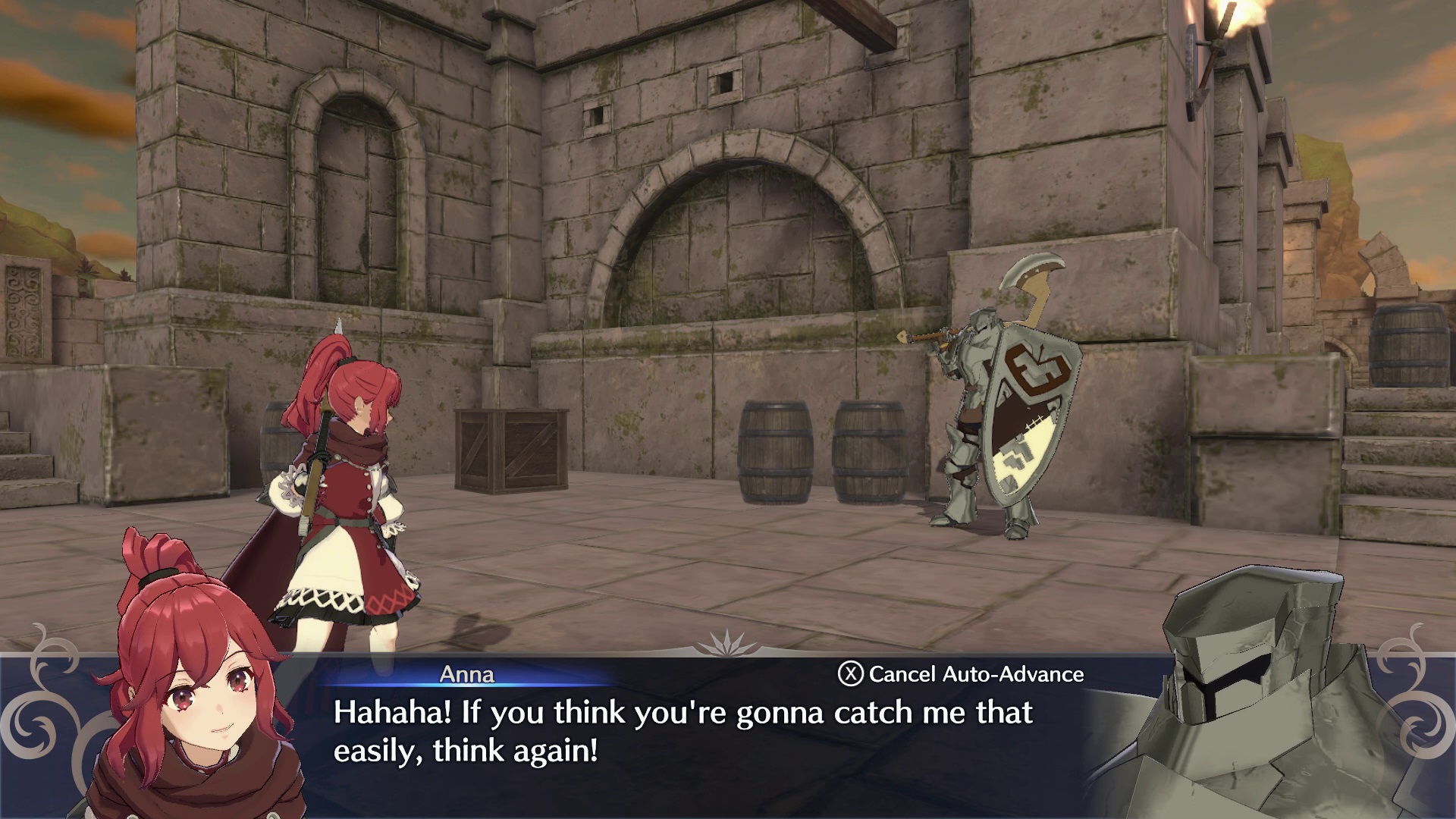
This is not to say there are no downtimes between battles, there is, as between each battle is the ability to return to the floating Somniel headquarters, the base where all the heroes rest and do their day-to-day routines. This home has all the things you need to refill items and gear, plus side entertainment, such as fishing, wyvern riding, arena fighting, offering gifts, and cooking meals with other colleagues. These are ways to increase support ratings, along with fighting in battles with teammates, which translates into bonuses in combat to their various stats and small cutscenes which let the player see more of the personalities of the fighters and their little interactions between squad members.
Somniel is also home to the Ring Chamber, an important element that enables the game’s best new feature, which also happens to be what brings us the classic heroes of the series back into reality, the Emblem Rings and their subclassed Bond Rings. Each Emblem Ring houses a spirit of a hero, so the likes of Marth, Siguard, Celica, Roy, Lyn and many others appear in the game, with more being added if you purchase the expansion pass that is on sale (at the time this review you can get seven additional rings through this downloadable content, with more to come and some story content in the future as well).
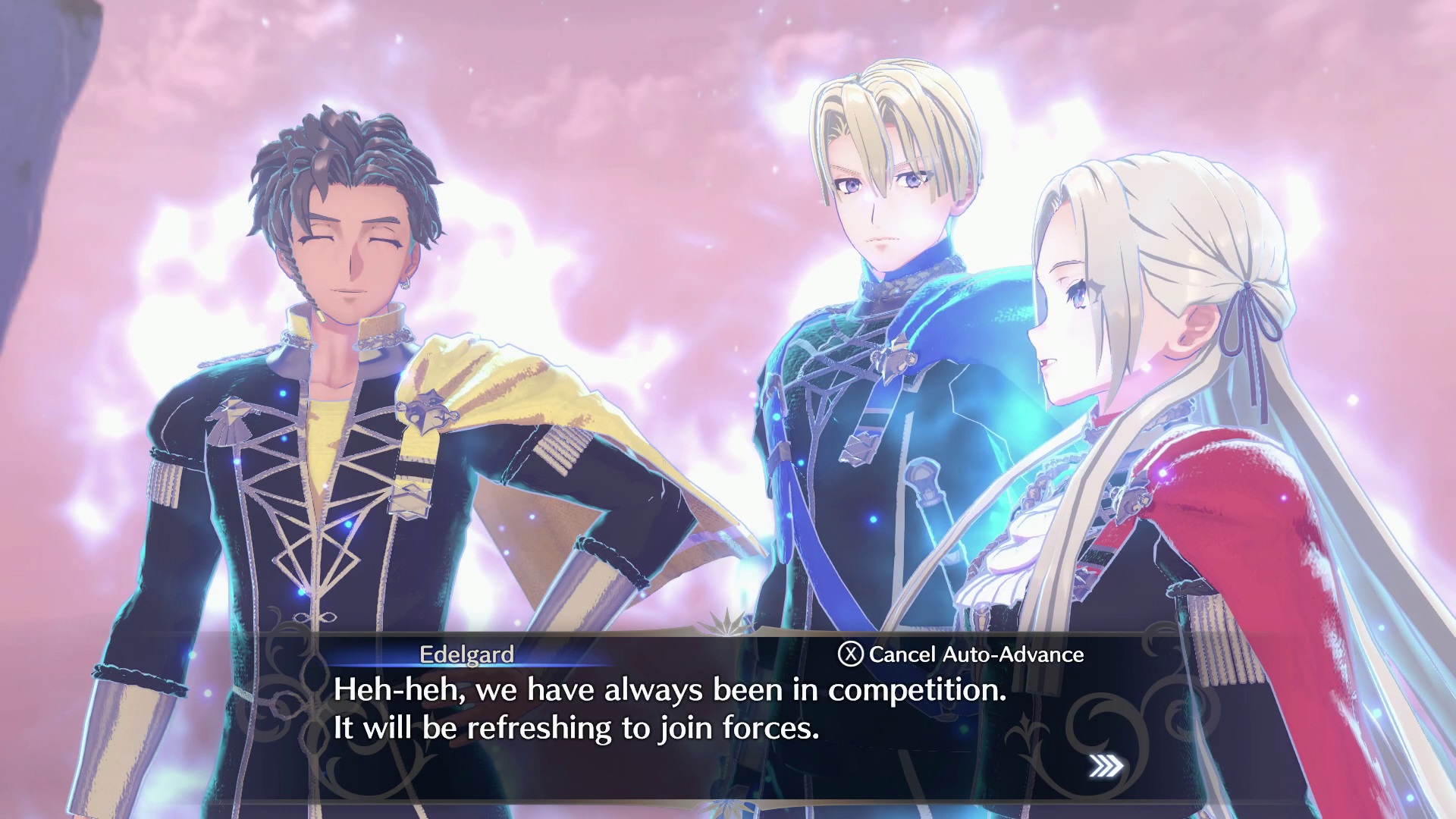
These rings are not just for showing off fan favourites but have quite a lot of ability within them, which can be equipped to any character. Skills unlock as the bond between the user and Emblem Ring increases from use, which builds up their relationship with them. Sadly, the cutscenes involved around this are way shorter and disappointing compared to the main characters that get longer, more drawn-out cutscenes. At least each Emblem Ring gets its own special Paralogue Chapter that takes a level from that game and puts it here to have a throwback fight, a neat inclusion to celebrate that hero’s impact on Fire Emblem. The skills of the Emblem Rings, along with the ability to inherit skills from any Emblem Ring to benefit those without having them equipped, make Fire Emblem Engage’s warriors truly customisable.
Warriors can also be trained with the spirit embedded in the rings through the arena to be able to quickly level them up through spending bond fragments, a currency in the game that is used to do anything with the rings and is gained simply by accomplishing achievements, finding them in battle or around Somniel or performing in the mini-games situated around the base. These items are easy to come by, mainly through achievements, as there are so many of them in the game to unlock for doing the most minimal of things. It is a system that works incredibly well married with the combat and opens up so many customisations for each hero. It feels this Fire Emblem has given the character class types more freedom to evolve into others, as progressing heroes into advanced classes is based on learning weapon skills from these Emblem Rings rather than from using weapons repeatedly.

Shifting the focus of the game development to the roots of the series means Fire Emblem Engage makes sure the combat is some of the best in the series to date. Combat is turn-based, with whole armies making their move before the other side. Movement is still grid-based, with units able to move or attack a certain number of squares. The traditional Weapon Triangle mechanic returns with its simple rule that swords beat axes, axes beat lances and lances beat swords. There are always outliers or units that do not fall into these categories, and some weapons are able to flip their weakness, so a sword will now beat lances, but would be weak to axes, making it a handy weapon to keep around in the character’s five slot inventory to switch to when the enemy has the desired weakness to exploit. The new “Break” feature that has been added disarms the opponent for the rest of the turn, allowing other units to attack them without the fear of being hit on the counter. Smash is also a new feature for heavy weapons, a new type for Fire Emblem, which pushes back the enemy one space, great for placing them into harm’s way of another attack or just to get them off a special square that is buffing the enemy on it.
What brings spice to the traditional formula is the Emblem Rings. The most obvious feature is the ability to engage with the ring to turn into some sort of fusion of hero and ring spirit for some marvellous costume designs. This power-up lasts for three turns before draining and requiring a charge-up again for a few turns unless putting a unit on a blue flame that instantly refills the metre. The transformation allows the wielder to use the ring’s legendary weapon. For example, using the Emblem of Blazing ring who is powered by Lyn from Fire Emblem: The Blazing Blade on Game Boy Advance, gets to use her Mani Katti sword that destroys cavalry and armour class units. It also offers new skills during this three-turn power-up. Lyn is able to call upon four clones of the wielder that surround her on the square grid, which have all the same stats apart from their health is 1HP. This helps with protection but also offers great damage potential, as units often go in for the attack, miss, and the double then counters with a powerful move that can often kill a standard unit in one attack. Lyn also has a long rage bow attack as well that can hit long distances.
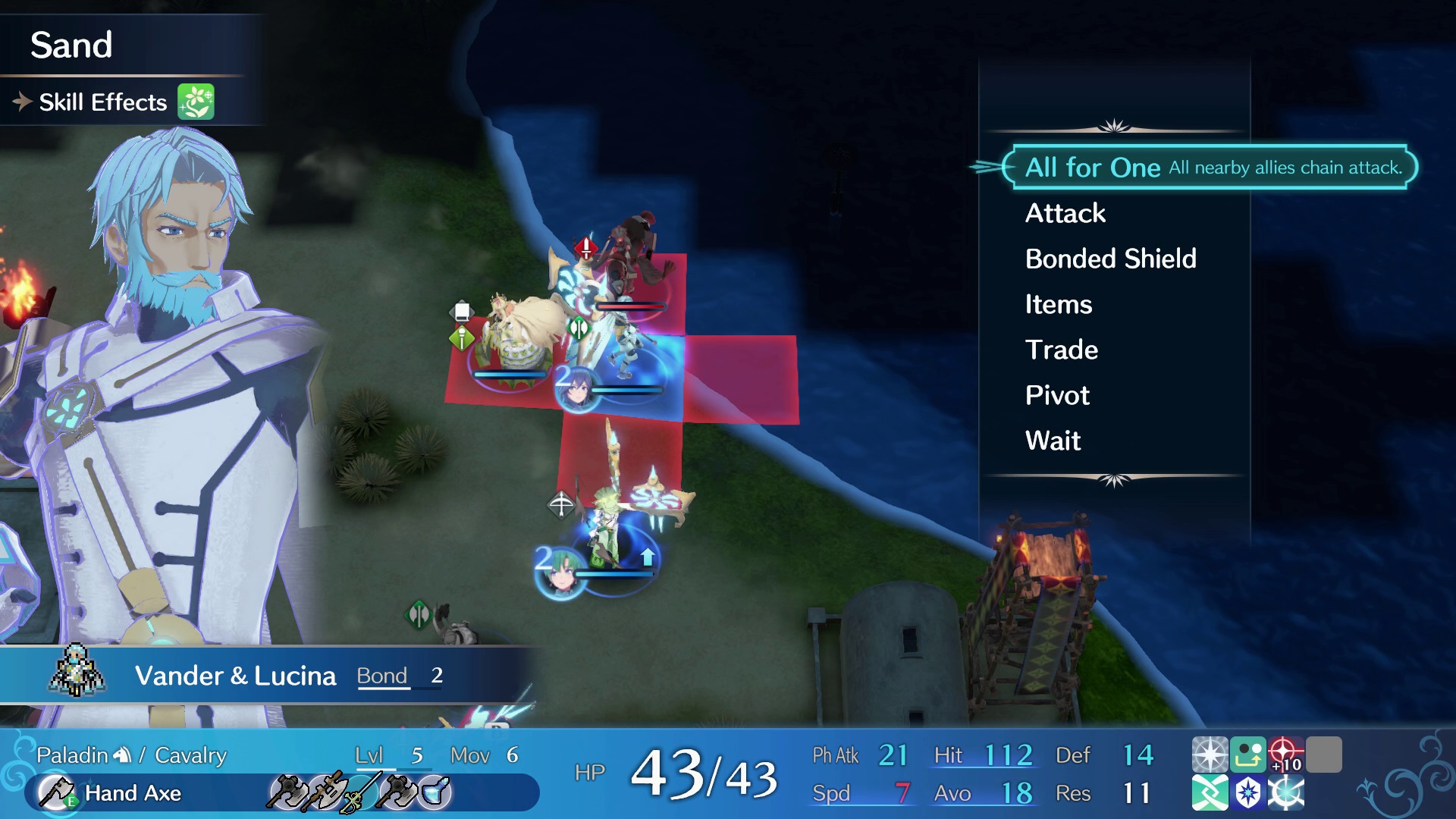
That feature alone is sweet in itself, but each ring has bond effects that apply at all times when equipped. As each bond level increases, up to a maximum of 20, another skill is unlocked. These aren’t as powerful on their own as when using the ring’s powered-up state, but they still apply things like access to legendary weapons, increase skill improvements (extra speed, strength, dexterity, health, etc.), and weapon proficiency, which was mentioned earlier, allows for units to then gain promotion to new classes with this proficiency requirement. Equipping an Emblem Ring tailored towards magic makes sense putting them on a mage, but sometimes they have a skill that would work on another class type, such as Holy Stance, an ability on Celica, whose ring focuses on mage elements, has a skill that enables a percentage of damage taken to be dealt back on specific foes. There are many available and these skills become handy for a multitude of situations. It opens up a whole area of skill swapping thanks to the generosity of being able to unlock skills without the need to gain the bond through the use of the ring because of the bond fragments. It would have been more frustrating if the game forced the player to have to use the ring to increase its bond level, due to favourites eventually dying in battle and being replaced, or new recruits who come in later in the game and need training with the desired Emblem Ring.
The classic and casual difficulty options remain, with casual removing a unit on death for the remainder of the battle but allowing them to return to fight in the next chapter. Classic remains the true Fire Emblem experience, with units dying staying dead or inaccessible to use in battle for the rest of the story. A scary thought when one of your best is killed off, but with the ability to rewind time to take some turns back, means that death is not as scary as it sounds, as you can readjust the unit that died and move them somewhere else to dodge the impending doom. Combat reworks are for the better, as now durability has gone from most things, with staffs and other key items the only things that have limited use in battle.
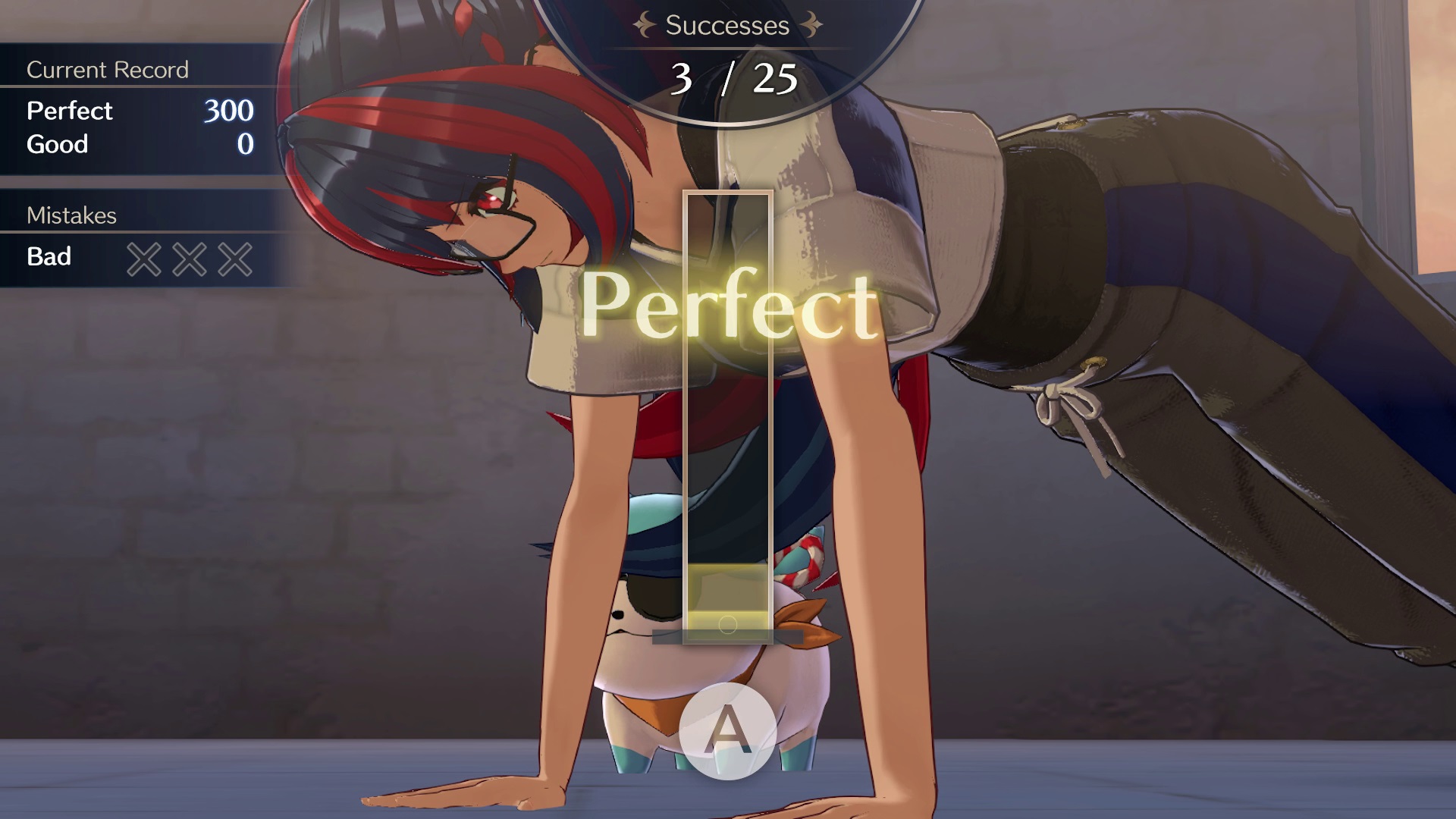
The last thing to mention is the inclusion of online features. In the campaign, this adds additional items, experience and bond fragments on tiles that other players have died on, nothing all that exciting really, but the more fun stuff is within Somniel and its Tower of Trials. This feature has three main modes. The first is Tempest Trials, a challenge that requires getting through three consecutive battles, the difficulty is set by unit levels, which the player can adjust before starting, with the reward being exclusive items that are used to augment weapons, the higher the level, the more reward on offer. Relay Trial is a bizarre semi-co-op mode in which a battle is no longer than 10 turns, but after a couple of turns, the player pops out and someone online will take over in the future, with the rewards given once the final turn has been done by a friend (through code sharing) or a stranger online. This mode is something to do and leave and check on later, not really involving but a short and easy way to gain the rewards. The last feature is Outrealm Trial, a place to create custom or play on custom maps against other player’s teams, although the downside is that this is a team controlled by an AI and not the player themselves, so there is no true 1 vs 1 feature here, but it’s a nice side piece to jump into from time to time to take a break from the story and see what maps people have come up with.
Fire Emblem Engage is a great Fire Emblem title that focuses on its core roots, the tactical RPG elements; more so its combat. The story is fun, if straightforward, but by aiming for the battle mechanics of the game, Intelligent Systems has been able to make the series’ best combat to date. The addition of the Emblem Rings and what they bring to the characters and their customisation opens a better progression system for each hero while adding more elements to change how one should approach battle scenarios. Throw in some little quality-of-life improvements and new weapon behaviour and this is a Fire Emblem that enjoys celebrating its past heroes and games, but keeps the battles rejuvenated with these new mechanics to push it forward rather than leaving the gameplay stuck in the past where its heroes have come from.
